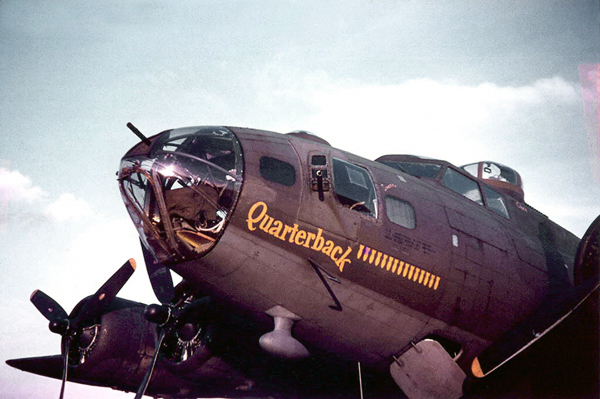
Quarterback (42-30212, 388BG) MIA 6 August 1944
Before I begin, I would like to tell a story…
Years ago, I joined a group overseeing a North American B-25 which had been pulled from a South Carolina lake in the early-1980s. She had been lost during the war in a training exercise. The aircraft was in very poor shape and had gone through a slew of owners who all did nothing with her. It would hardly be exaggerating to say that the paint was holding more together than the aluminum. Well, in an effort to get something going, I took it upon myself to research the airplane’s original paint scheme. After a fair number of roadblocks, I was finally able to locate a collection of photos from when she was pulled from the lake.
The airplane had been silver – i.e., unpainted.
This was contrary to how the airplane had been displayed. For over 30 years, this B-25 shell had been painted in the standard Olive Drab over Neutral Gray. The others in the group grumbled at my findings. A few pointed out that her now-deceased pilot remembered a tan color. Others insisted that the paint must have come off under the water. I had to point out the stencils, national insignia, and anti-glare panel in the photos before anyone would accept otherwise.
I bring this up to point out how memory can be a funny thing. And memory is particularly problematic when dealing with historic paint schemes.
The veteran could hardly be faulted for being wrong. He had flown a multitude of aircraft in his lifetime, including dozens of B-25s. Yes, we had hoped he would have a better recollection of this one, if only because he was at the controls when it crashed. Still, this was a stretch – it was over 70 years ago! Think of it this way: how accurately can you describe the interior of your parents’ car from when you were a child? You might be surprised to find how off you can really be.
The others in the group could not be faulted either. According to factory documentation, North American did indeed paint all the aircraft in that series of B-25s. It took actual photos, taken at the various bases in question, before we understood that some had indeed been stripped of their paint. Sometimes it is not enough to trust your research – sometimes you have to verify that research, too.
Today’s B-17 survivors are testimony to the errors of memory.
Take, for example, the use of green paint in virtually all B-17 restoration interiors. Not only is it wrong – it is dead wrong.
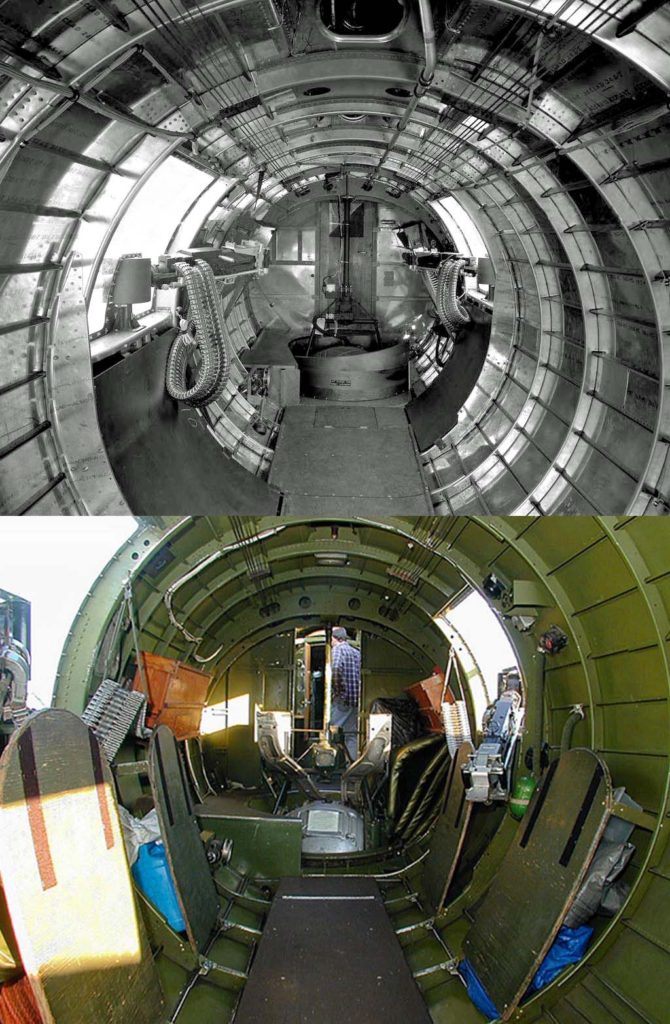
A wartime late B-17G compared to a contemporary restoration. While this is one of the more complete restorations around today, not only is the color wrong, but the ball turret has been fitted with redundant external ammo cans and chunks of plywood have been fitted to the walls for passenger safety.
Do not get me wrong. I understand that many restorations paint their interiors to try and ease the airplane’s upkeep. Still, there are many B-17 enthusiasts who honestly believe that their interiors were covered in this avocado-like green. Where did this misunderstanding come from?
That’s easy: zinc chromate.
Zinc chromate is a compound formed by the Cronak process to plate metal with zinc using sodium dichromate and sulfuric acid. Highly carcinogenic, zinc chromate was used extensively throughout the 1930s-1950s for its high resistance to corrosion and rust, its toxicity killing any organic growth the metal might otherwise incur. A powder-like substance, zinc chromate must be mixed with a pigment to properly adhere to the metal. Usually, the pigment in question was black, and since zinc chromate itself is yellow, the resulting color could be anywhere between a dark lime green to a sickly, greenish yellow depending on the mixture.
The methodology behind using zinc chromate varied wildly between aircraft companies; for example, Consolidated would often dip entire sheets of aluminum in this mixture. For Boeing, it appears that zinc chromate was used rather sparingly, usually in areas where differing metals were attached, or in areas exposed to corrosive materials like fuel. (Many of these original zinc chromate pieces we have seen were dipped rather than sprayed – our restoration replicates this process.)
It is because of this green color that some have made the mistake of thinking that zinc chromate was a paint. After all, logic suggests the Army would paint the interiors of their airplanes, and the Army loves its green, right? From this, too many go forth to spray green paint throughout the entire aircraft. Truly a shame.

Ladies at the Douglas plant in Long Beach, California work in the waist area of a B-17F. Note how the supports for the floor and waist gun mounts have been dipped in zinc chromate.
The only compartment to be consistently painted in the B-17 series was the cockpit, and even then, the color used was not a rich green but a dark, blue-green color. Not only does the manual confirm this, but wartime photos do the same.
The blueprints and manual call for this color to be used “as required” in an anti-glare measure. In fact, while some documentation calls for it to be used in all three crew compartments (nose, cockpit, and radio room), photographic evidence shows that the radio room was rarely, if ever, painted. Likewise, F-series photos rarely show this color in the nose, usually only appearing on the various mounts and window frames installed at the Army Modification Centers. Based on photographic evidence, the only area consistently painted throughout the B-17 series was the cockpit.
Two companies provided this paint: Berry Brothers of Detroit, Michigan and DuPont of Wilmington, Delaware.
Likely due to the difference in manufacturers, there seems to have been some variation to the color, with one being a bit darker than the other. It certainly does not help that Boeing documentation at times lists them under the same paint codes. Research by historian Dana Bell shows that Dark Dull Green gained prominence over Bronze Green during the war due to its lack of reflective properties. It could be that Bronze Green may have been the Berry Brothers color and Dark Dull Green the DuPont color, as Berry Brothers Bronze Green was extremely popular on the prewar civilian market. From our own experience, comparing pieces of wreckage to original color samples, we have found both colors, with the darker shade being particularly noticeable on the turret pieces.
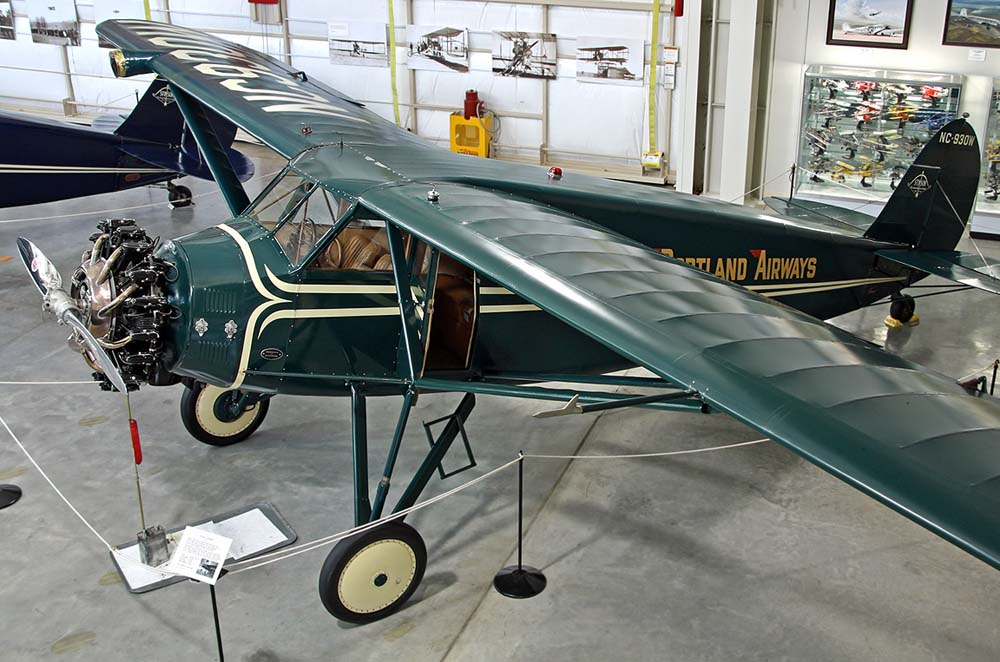
A bronze green Stinson Junior on display at the Port Townsend Aero Museum in Washington.
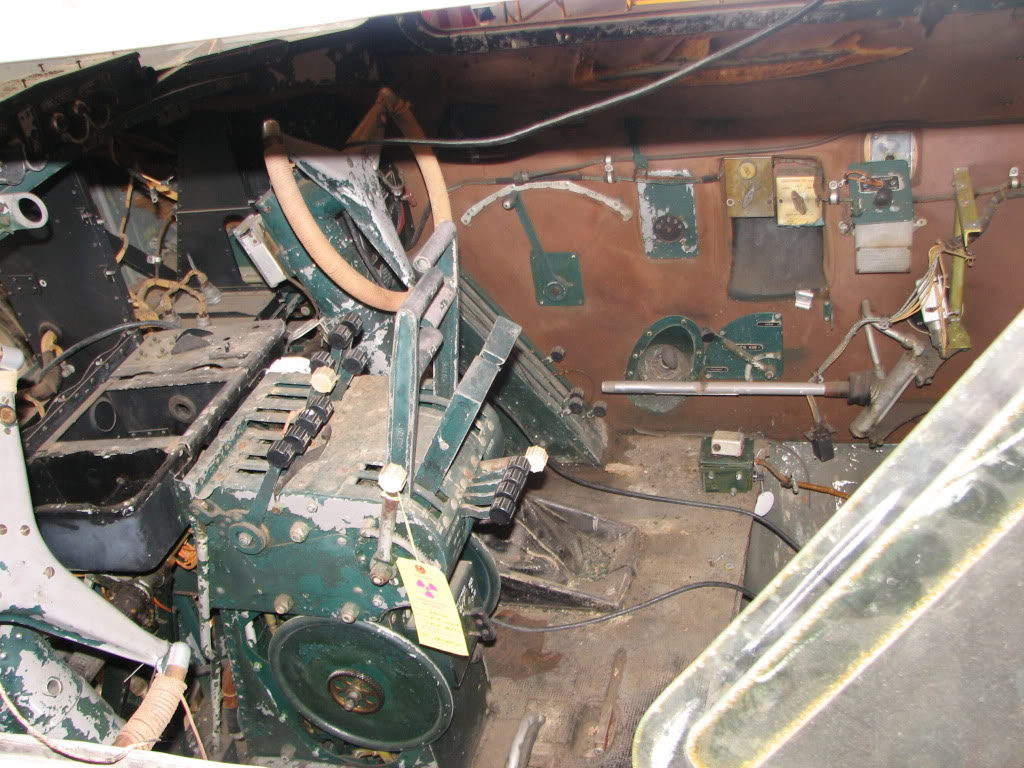
The unrestored cockpit of Swoose, a prewar B-17D recently transferred from the Smithsonian to the National Museum of the US Air Force. Note how the fabric on the walls has faded to a brown color from exposure. (© Steve Nelson)
Aside from the bronze green and occasional zinc chromate – as well as the fabric and insulation covering the walls of certain compartments – the most distinguishing aspect of the B-17’s interior is the aluminum identification stamps. These markings were placed on aluminum sheets by the milling companies as a means of product identification. Until recently, these markings could only be seen aircraft that survived the war completely unaltered – more often than not, this usually meant wreck-sites. However, the recent growing trends toward historical accuracy have brought a renewed effort to replicate these markings.
The most common of these markings reads “ALCLAD 24S-T AN-A-13.” “Alclad” is a trademarked term that has entered popular lexicon, but essentially it refers to a high strength aluminum alloy coated with a thin surface layer of high-purity aluminum. In this case, the “24” refers to the use of copper in the alloy, the “S” to indicate that it is a wrought material (can be shaped by rolling, drawing, etc.), the “T” that it is tempered (i.e., heat-treated), and “AN-A-13” to its specification: Army-Navy Aeronautical 13 (a specification common to 1942/1943 production aircraft).
In the interest of being as accurate as possible, we at Hangar Thirteen have worked to recreate these identification stamps. The wartime examples that we have use a particular serif font that was common to aluminum made by Alcoa of Pittsburg, Pennsylvania – the original copyright holder on ALCLAD. We scanned this font and cleaned it, copying not only the lettering but the spacing of the letters as well.
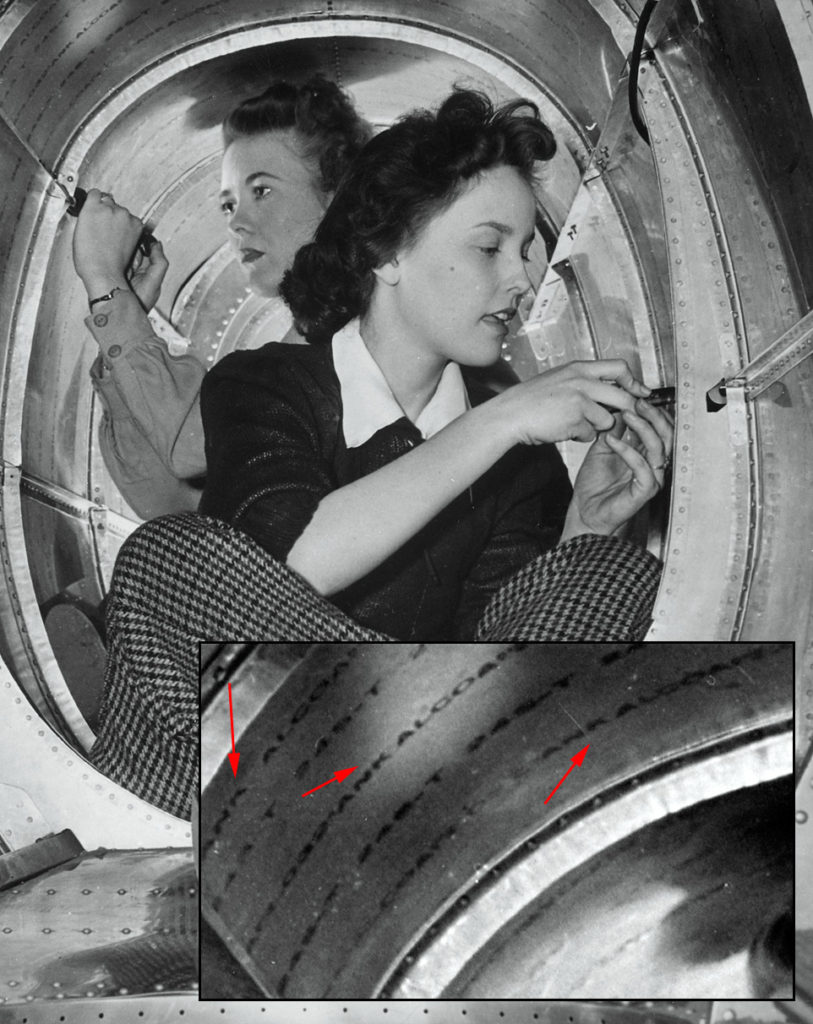
A wartime factory photo where the Alclad markings are clearly visible.
Lastly, for those of you who are interested, I have transcribed sections of the Boeing erection and maintenance manual that pertain to paint finishes. From what we have seen, the content of these sections changed little (if at all) throughout wartime B-17s. Too often the argument “they probably did not pay that much attention back then” has been used to justify inaccurate paint schemes. If you want to know what the factory standard actually was, read this page.
This reference page also contains a listing of the Boeing finish codes, which are listed on all Boeing blueprints. “BF3-81,” for example, was the Boeing finish code for the Bronze Green/Dark Dull Green noted above. Also included is a color chart showing the most common paint colors used in and on the B-17.
